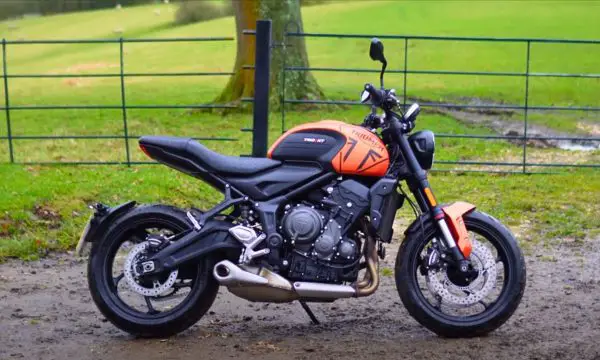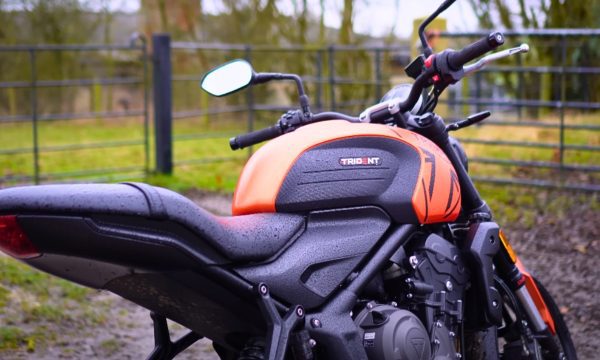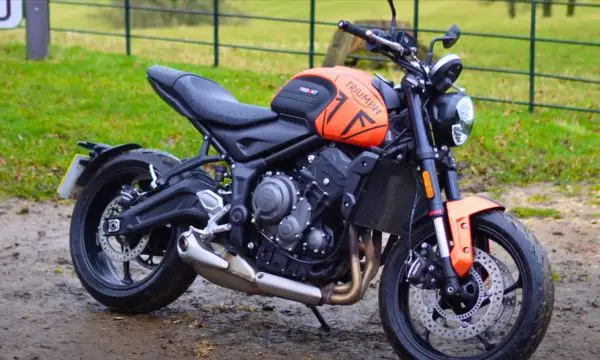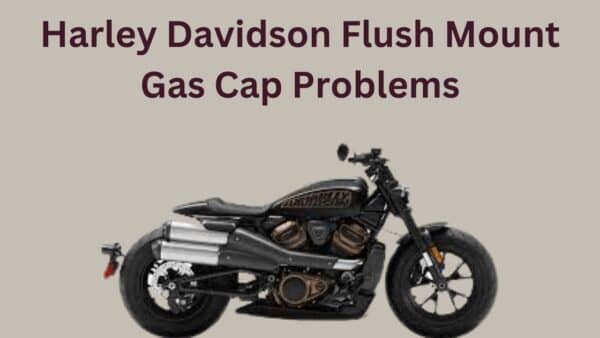Ever since I laid eyes on the Triumph Trident 660, it was love at first sight. The sleek design, the promise of power beneath the seat, was all I could ask for.

But as they say, not every love story is perfect. Over the months, as I rode through bustling city streets, I began to notice a few quirks and issues with my beloved bike.
It’s been quite the adventure, and I think it’s only fair to share the ups and downs of this relationship, especially for fellow motorbike enthusiasts who might be eyeing the Trident 660.
Triumph Trident 660 Problems
The common problems with the Triumph that riders have faced over time are starting issues, overheating, not going into neutral, revving up, not idle, leaking oil, and loss of power.

1. Starting Issue
One of the common issues that owners have encountered is difficulty with starting the motorcycle.
This problem can be particularly frustrating, especially if you’re gearing up for a ride.
The root of the starting issue can stem from several areas, but a primary suspect is often the battery.
A weak or old battery might not hold enough charge to turn the engine over.
Another potential cause could be the motorcycle’s starter system or even a clogged fuel system, which prevents the proper amount of fuel from reaching the engine.
To tackle this issue, start by checking the battery’s charge level with a voltmeter.
If the voltage is below 12.6 volts, it might be time to charge it or consider getting a replacement.
Also, inspect the battery terminals for any signs of corrosion and clean them if necessary, as this can impair the electrical connection.
If the battery checks out fine, the next step is to examine the starter system and fuel lines. Look for signs of wear or damage.
For more complex checks involving the fuel system or internal engine components, consult the motorcycle’s manual.
Remember, periodic maintenance can help prevent these issues from arising in the first place.
2. Overheating
Overheating is a known issue that can affect any motorcycle, potentially diminishing the overall riding experience.
This problem often manifests during long rides or in heavy traffic when airflow to the engine is restricted.
Overheating not only causes discomfort due to the excess heat radiating onto the rider but also leads to engine damage if not addressed.
To combat overheating, ensure the coolant levels are topped up as needed. It’s also wise to inspect the radiator for any blockages, like debris or dirt, that might impede airflow.
Related: Triumph Daytona 660 Review
In traffic, try to keep moving, even at a slow pace, to promote air circulation.
If you’re residing in particularly hot climates, installing a higher-grade coolant or aftermarket radiator fans could offer a more robust solution.
3. Won’t Go Into Neutral
One common issue that Trident 660 owners sometimes face involves the bike’s reluctance to shift into neutral.
This can be particularly frustrating when you’re at a stoplight or trying to start the bike from a standstill.
Essentially, the gearbox might seem stubborn, refusing to slide into that neutral sweet spot between the first and second gears.
This isn’t just an inconvenience; it could also hint at underlying mechanical concerns that, if not addressed, could lead to more significant problems down the line.
To tackle the issue, ensure your clutch is correctly adjusted. An improperly adjusted clutch can often lead to shifting problems, including difficulty finding neutral.
Sometimes, the gearbox might be more cooperative once the engine is warm.
If you’re facing this issue at the start of your ride, try shifting into neutral after a few minutes of riding.
Instead of using a full, forceful foot movement to find neutral, try a gentler approach. A slight nudge can sometimes be more effective than a full stomp.
Remember, while finding neutral might seem like a small aspect of riding, it’s essential for your biking experience and safety.
4. Won’t Rev Up
For riders, a common issue that pops up is that the bike won’t rev up.
Imagine you’re all set for a ride; you jump on, and you turn the key. Instead of roaring to life, your Trident 660 acts like it’s had a hard night and can’t be bothered.
This problem can be pretty frustrating, especially if you are looking forward to a smooth ride.
The root of this revving issue often lies in the motorcycle’s electronic or fuel systems.
It could be something as simple as a clogged fuel filter not letting enough fuel through to the engine, a faulty spark plug that’s seen better days, or even a software glitch in the bike’s ECU.
Before you start envisioning a hefty repair bill, here’s a step-by-step guide to troubleshoot the issue:
- Don’t overlook the simple things; ensure your fuel tank is not empty and that the kill switch is in the correct position.
- Immediately replace the fuel filter if it’s clogged and ensure the fuel pump is operational. Sometimes, just using a fuel system cleaner can solve your woes.
- Take a look at the spark plugs. If they’re looking worse for wear, a new set could bring back that missing rev.
- Modern bikes like the Trident 660 often need software updates. Check if there’s one available for your bike. Sometimes, a simple software update can solve the issue.
- A weak battery might not be providing enough juice to get things moving. Ensure it’s fully charged and in better condition.
5. Not Idling
This can be a bit confusing and worrying when you start up your bike, expecting a smooth hum, but instead, it refuses to stay running without some throttle help.
This problem can stem from a few different places, such as the bike’s fuel system, air intake, or even its electronic sensors.

To tackle this, ensure that your bike’s battery is fully charged and the fuel is fresh. Sometimes, the simplest solutions fix the problem.
Sometimes, clogged fuel injectors or a dirty fuel filter can restrict the fuel flow, causing it to stall when idle. Cleaning or replacing these parts can often resolve the issue.
Just like with fuel, the bike needs a clear path for air to maintain an idle. A blocked air filter can cause problems. Check it and clean or replace it if necessary.
Modern motorcycles rely on various sensors to run smoothly. A faulty sensor can lead to idling issues. You might need a diagnostic tool to check this.
The Trident 660 has an idle speed control valve. You might need to adjust the idle speed setting according to the manual’s specifications.
6. Leaking Oil
One of the problems some owners have encountered is an oil leak, a concern that demands immediate attention.
This typically happens around the area where the engine meets the gearbox and, in some cases, near the oil filter or the drain plug.
The reason? It could range from a faulty seal, an over-tightened or under-tightened bolt, or a manufacturer defect.
Addressing this concern is crucial to ensure your ride’s longevity and performance. You must start by identifying the source of the leak.
Clean the area around the suspected leak site to see where the oil is coming from accurately. If it’s around a bolt or a seal, check if it’s properly tightened.
For problems around the oil filter or drain plug, inspect for any damage or wear that might require replacing these components.
In situations where the leak doesn’t stop or you’re unable to find the source, seeking professional help is the best course of action to prevent further damage.
7. Losing Power
This problem can be pretty baffling and frustrating, especially if you’re out enjoying a ride and suddenly your bike doesn’t respond as it should.
The loss of power could be gradual or sudden and might manifest as an inability to accelerate or a noticeable drop in the bike’s performance.
The root cause of this issue could be lies in the bike’s fuel system or ignition system.
However, a clogged fuel filter or a dirty air filter can block the flow of fuel or air, respectively, leading to insufficient combustion and, as a result, a loss of power.
Similarly, issues with the bike’s spark plugs or ignition coil can disrupt the engine’s ability to ignite the fuel-air mixture effectively, causing power loss.
To tackle these issues, start by checking the air filter and the fuel filter. Replacing an air filter is a simple task that can instantly improve your bike’s performance.
Similarly, a fuel filter that’s clogged with debris needs to be replaced to ensure a smooth flow of fuel to the engine.
Then, inspect the spark plugs for signs of damage; if they look worse for wear, replacing them could restore your bike’s power.

Ahtsham Younas is a passionate blogger and content writer. He loves to ride motorcycles and learn the mechanical process behind the motorcycles.
He has been writing articles in the motorcycle industry since 2019 and has learned many things about motorbike niches.


